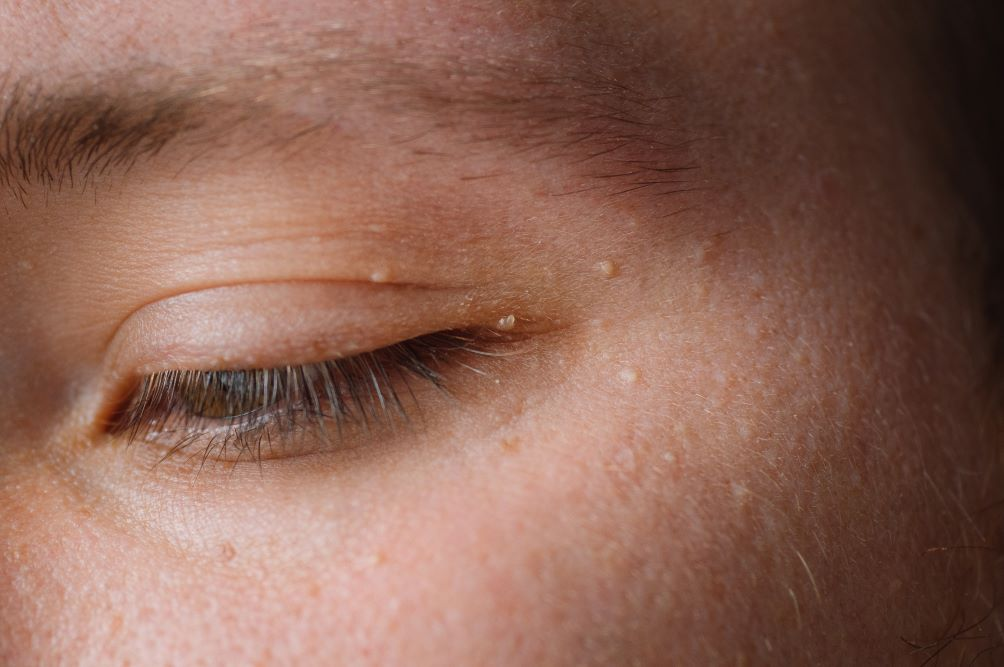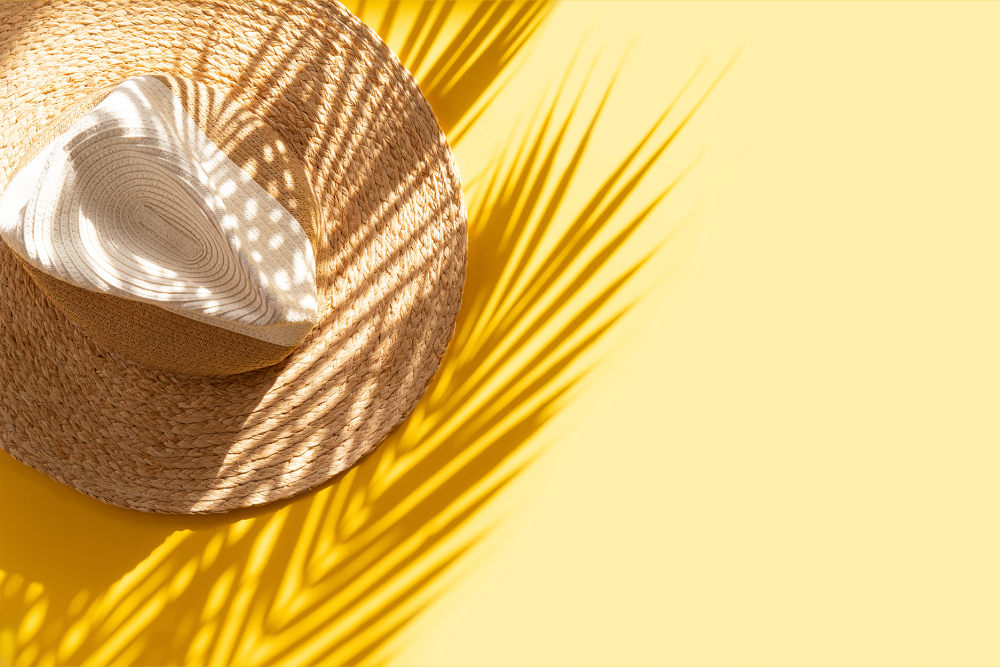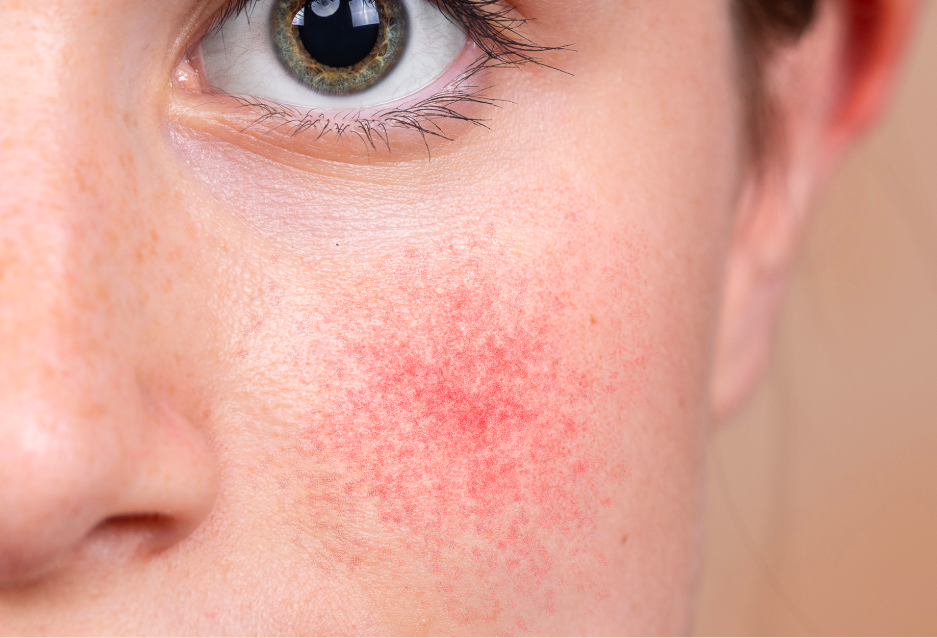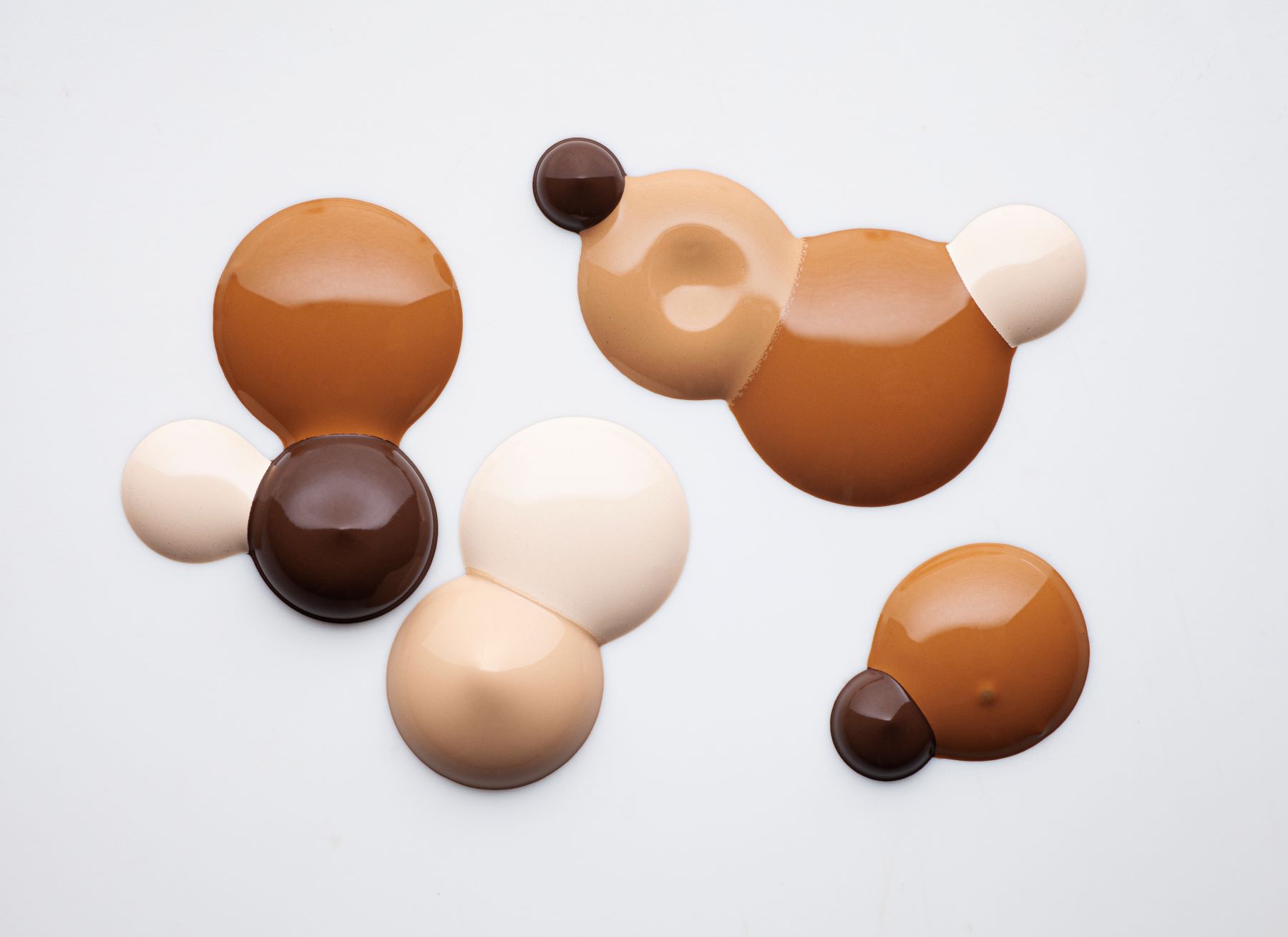Ask A Dermatologist: Sun Protection And Skin Cancer

Link to share article here:
Ask A Dermatologist: What Is Milia?
Ever noticed a handful of small white bumps on your skin – around your nose or forehead, on your cheeks, around your eye and eyelids – that look like whiteheads, but just won’t pop? It could be milia.
There’s a lot of (mis)information out there about milia. But don’t worry, we tapped our expert Dermatology Team for the lowdown on what they are, how to treat and prevent them and how to distinguish them from other blemishes and cysts on your skin.
What is milia?
Milia, the plural term for milium cysts, are white bumps that form on the skin, usually under the eyes, on the cheeks, forehead or around the lips. It’s caused by a buildup of keratin underneath the surface of the skin. Keratin, a strong protein, is found naturally in skin, hair and nail cells. Milia is common in newborn babies, known as milk spots, but someone of any age and skin type or tone can get them.
Are milia the same as whiteheads and blackheads?
Whiteheads and blackheads are completely different to milia, as they’re a type of acne. Whiteheads are closed comedones (the term our Dermatologists use for spots, science fans), usually containing a buildup of dirt, oil and bacteria. Blackheads are open comedones, and the same buildup gets oxidised by exposure to the air, giving them their ‘black’ appearance.
“Milia are essentially small cysts. They’re very common and look like small pearly white bumps on your skin.”
DR MALVINA CUNNINGHAM
With even a small amount of pressure, you can pop or squeeze blackheads and whiteheads. Milia are a lot tougher, and no matter how much you squeeze (and we don’t recommend you do!), they usually won’t budge. While they’re alike in structure (skin that’s covering a clogged pore), that’s where the similarities stop.
Is there a way to prevent milia?
Any dermatologist will tell you that retinoids and exfoliants, as part of your usual skincare routine, can help to keep milia at bay. Regular use of tretinoin, for example, can help to keep milia from forming on the skin, in the same way it prevents acne. Retinoids like tretinoin increase skin cell turnover, ensuring a renewed skin surface and clear pores.
“Milia do not need to be treated, however there are a number of options available to treat and prevent them if you like.”
DR MALVINA CUNNINGHAM
Dr Jason Thomson, Head of Medical, tells us “You don’t need to exfoliate every day – doing so, you run the risk of over-exfoliating your skin barrier if you do, which can lead to irritation and breakouts.”
Exfoliation can be done chemically, using acids such as AHAs and BHAs that gently dissolve the bonds holding together the dead skin cells such as glycolic, salicylic and lactic acid; or physically – using scrubs, brushes or tools that physically remove the dead skin cells.
“You don’t need to exfoliate every day. If you do, it can lead to irritation and breakouts.”
DR JASON THOMSON
Cleansing is the most important step in your routine, and generally should be done every day. It’s also a good idea to stick to non-comedogenic skincare, sunscreen and makeup products, as these don’t clog pores which lead to milia, acne and congested skin.
What’s the best method for milia removal?
Prevention can only do so much, and if milia appear you might find yourself tempted to squeeze them – please try not to! Milia removal at home isn’t recommended, as scraping and squeezing something that won’t go can lead to irritation and scarring.
Dr Malvina Cunningham, Consultant Dermatologist, explains, “Milia can be de-roofed with a sterile needle and extracted by an experienced professional. Other treatments include diathermy (a surgical technique which uses heat from an electric current to cut tissue or seal bleeding vessels or laser if milia are more extensive.”
Start by using a gentle exfoliant or a topical retinoid to help the milia fade. If you’re not seeing results in a month of two, it might be time to visit a dermatologist.
Is milia genetic?
Yes! If your parents have milia, or other keratin-related skin conditions such as keratosis pilaris – overproduction of keratin causing rough, bumpy skin on arms and legs – then it’s likely you’ll get it too.
Milia takeaways
For most skin goals, using a topical retinoid – like tretinoin, is your best bet at preventing milia. Keeping your skincare and makeup routines simple too (huzzah for skinimalism!), works also.
Remember, there’s nothing wrong with having milia, so if you have them and don’t want to get rid of them, that’s perfectly fine. Milia are harmless and they don’t have any nefarious effects on the skin. But if you choose to remove them, just make sure you do so safely.
New to Skin + Me? Get your first month of personalised skincare for £4.99 with promo code DOSE – complete our quick consultation here.
Looking for a routine refresh? Add the Dream Routine to your Skin + Me subscription.
In need of a restock? Head to The Skincare Shop for one-off purchases of your Routine Essentials.



